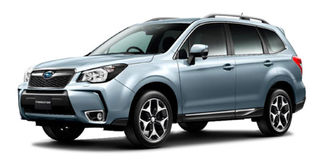Ask the Mechanic

IS THERE A PROBLEM WITH MY CAR’S BRAKING SYSTEM?
Hello Paul, I recently bought a Subaru Forester model 2013 which is comfortable, with enhanced new technology. However, the vehicle has a sensor which forces it to suddenly break in case of an obstacle on the road, including pedestrians. I have tried to remove the sensor but it seems it is inbuilt. How do I go about this?
Doreen Ahimbisibwe
Hello Doreen, your 2013 Subaru Forester was built with a safety technology called EyeSight, which is designed to enhance your situational awareness as you drive or intervene by slowing or stopping the vehicle to prevent collision accidents. This is intended to protect you, the passengers, pedestrians or other motorists in case you are overcome by fatigue, distracted or indisposed. EyeSight can be switched off or adjusted to different sensitivity settings to suit your driving situations.
However, before you turn it off, know how it works because it helps you save lives. EyeSight comes with two cameras mounted near the rear view mirror and works like a pair of eyes that monitor the action in front of the car. It integrates four different systems to prevent or avoid accidents; pre collision braking, pre collision throttle management, adaptive cruise control and lane departure or sway warning.
Pre-collision braking is designed to prevent rear-ending the car ahead of you by watching and gauging the distance of cars ahead. If the car ahead of your Subaru slows down, EyeSight analyses the closing speed, sends an alert and displays a visual warning. If you do not apply brakes, EyeSight will do it for you. At low speeds such as 35 km/hr, it can autonomously stop the vehicle. When speeds are greater, EyeSight can significantly reduce the speed to lessen impact or increase braking force.
Pre-collision throttle management is used by EyeSight to reduce engine throttle if you accelerate with an obstacle ahead such as a vehicle moving slowly in traffic.
Adaptive cruise control will keep adjusting car speeds to match the traffic speed patterns by braking or accelerating accordingly. EyeSight will brake to a complete stop if the car ahead does so.
Lane departure and sway warning EyeSight also identifies lane markings on the road. If the driver is distracted and departs from his lane, it will make beeping sounds to alert you. If a driver is drowsy or drifting side to side, the system will alert you and allow you time to avert an accident.
The EyeSight system seems to work better on a road where other motorists respect distance between their cars or motorcycles and the cars ahead of them. The system may face challenges on some of our roads.
To turn off EyeSight, pull and hold the EyeSight button on the steering multifunction buttons. Scroll down the menu using toggle switches to navigate and access Eyesight. Press and hold the EyeSight button until system is disabled.

MY CAR CONSUMES TOO MUCH FUEL
Hello Paul, my Subaru Forester 2009 consumes a lot of fuel; 8km per litre on the highway and seven to five kilometres per litre in urban centres. The spark plugs, all oils, air cleaner and filters were changed with no improvement. What can I do?
Martin Twine
Hello Martin, you did not share the size of your engine. The declared fuel economy statistics for the 2009 Subaru Forester 2.5 litre are; highway 13kms/litre and city traffic; 9.6 kms/litre. The fuel economy statistics for the 2.0 litre 2009 Subaru Forester are; highway 14.5 km/litre while in city traffic 11 km/litre. These statistics are not cast in stone. They will be determined by one of several intervening variables such as service condition (which you seem to have done).
Tuning of the engine is crucial in determining excellent fuel economy. For example, making sure there are no faulty engine management sensors such as oxygen sensors and mass air flow sensors which play a crucial role in guiding the engine management systems to efficient delivery of fuel. These can be inspected using a diagnostic computer check.
The cleanliness of the engine fuel system components such as injectors and intake valves is crucial for improved fuel economy. This can be achieved by using fuel designed with cleaning additives that clean your fuel system to eliminate fuel economy robbing dirt and lubricant additives. These help your engine to run lighter by eliminating energy wasting friction on the upper piston ring.
You can also improve your fuel economy by ensuring that your tyres have good tread depth and are correctly inflated. Worn out tyres require more fuel wasting energy to gain traction or the engine turns faster to move the car. Wrongly inflated tyres create more energy robbing rolling resistance. Adjust your driving style to improve fuel economy.
Also, avoid aggressive acceleration during take offs and harsh braking as these keep your transmission in low gears and engine revs high, which costs you more fuel. Use momentum to move your car downhill by gently easing your foot off the accelerator. Do not shift your gear to neutral since here you lose benefit of engine control. In traffic jam, switch off the engine; you are going nowhere.

IS IT OKAY TO RAISE MY CAR A BIT?
Hello Paul, is it okay to raise my car?
Emmanuel
Hello Emmanuel, raising your car with spacers improves ground clearance. However, it can damage your car suspension because it prevents articulation. The taunt upper suspension is permanently stretched so it wears out prematurely. Raising the car beyond the manufacturer’s design limit affects the centre of gravity and response to changing direction and road terrain.
This affects ride handling quality because it makes your car unstable when driving through corners or on uneven road patches. This is a potential cause of rollover accidents or loss of control, while driving fast.
Send sms: mycar (space) your comments and questions to 6933
Or email them to: [email protected]




